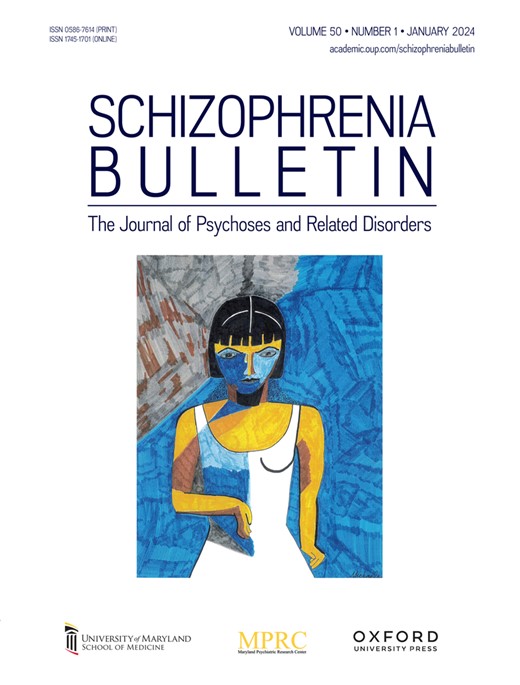38 THE FUNCTION AND MECHANISM OF EXTRACELLULAR VESICLES IN POSTOPERATIVE COGNITIVE DYSFUNCTION
IF 5.3
1区 医学
Q1 PSYCHIATRY
引用次数: 0
Abstract
Background Postoperative cognitive dysfunction (POCD) is a common complication in elderly patients, showing a decline in memory, attention and executive function, which affects the quality of life and recovery. Exosomes, as mediators of cell-cell communication, have attracted much attention in neurological diseases, which contain a variety of bioactive molecules that can participate in the CNS regulation through the blood-brain barrier. Currently, the function and mechanism of exosomes in POCD remain unclear. The study will explore the role of exosome in POCD through animal experiments and molecular biology techniques, and provide new targets for clinical intervention. Methods Healthy adult male C57BL/6 mice weighing 20-25g were divided into Sham group (n=20), POCD group (n=30), and POCD intervention group (n=30). The POCD model was constructed by common carotid artery ligation and isoflurane anesthesia. Spatial learning and memory abilities were assessed on postoperative days 1,3, and 7 using the Morris water maze (MWM). After the experiment, the distribution in the brain of fluorescently labeled exosomes was visualized by tail vein injection, and the expression of miRNA and key proteins in the exosomes was analyzed by Reverse Transcription Quantitative Polymerase Chain Reaction (RT-qPCR) and proteomics techniques. The Western blot and immunofluorescence labeling techniques were used to verify the relationship between molecules and neuroinflammation in exosomes. Data were analyzed using the SPSS 26.0 software, and the differences between groups were compared by one-way analysis of variance (ANOVA). Results Comparison of the main indicators between the groups is shown in Table 1. Table 1 shows that mice in the POCD group had prolonged latency on postoperative days 1 and 3, shorter residence time in the target quadrant, and improved cognitive function in the intervention group. After exosome tail vein injection, the fluorescence signal was enhanced in the hippocampus, indicating that exosomes penetrate the blood-brain barrier. By RT-qPCR, inflammation-related miRNA expression was up-regulated in exosomes in the POCD group, with the expression decreased after intervention. Proteomic analysis showed that the expression of proteins related to IL-6, TNF- α, and NF- κ B signaling pathway was increased in exosomes in the POCD group, and decreased after intervention. Immunofluorescence showed that the proportion of Iba-1-positive microglia activation in the hippocampus of the POCD group was high and decreased after the intervention. Discussion The function and mechanism of exosomes in POCD were systematically investigated. The results indicate that exosomes can enter the CNS through the blood-brain barrier and affect neuroinflammation and cognitive function recovery in the hippocampus by regulating inflammation-related miRNA and protein expression. This provides new molecular targets and theoretical ale for POCD intervention. Future studies should further validate the specific downstream signaling pathways of miRNA in exosomes in POCD, optimize the intervention methods, and explore its potential in clinical applications.38 .细胞外囊泡在术后认知功能障碍中的作用及机制
背景术后认知功能障碍(POCD)是老年患者常见的并发症,表现为记忆、注意力和执行功能下降,影响生活质量和康复。外泌体作为细胞间通讯的介质,在神经系统疾病中备受关注,它含有多种生物活性分子,可通过血脑屏障参与中枢神经系统的调节。目前,外泌体在POCD中的作用和机制尚不清楚。本研究将通过动物实验和分子生物学技术探索外泌体在POCD中的作用,为临床干预提供新的靶点。方法将体重20 ~ 25g的健康成年雄性C57BL/6小鼠分为假手术组(n=20)、POCD组(n=30)和POCD干预组(n=30)。采用颈总动脉结扎和异氟醚麻醉建立POCD模型。术后第1、3和7天采用Morris水迷宫(MWM)评估空间学习和记忆能力。实验结束后,通过尾静脉注射观察荧光标记的外泌体在脑内的分布,并通过逆转录定量聚合酶链式反应(RT-qPCR)和蛋白质组学技术分析外泌体中miRNA和关键蛋白的表达。使用Western blot和免疫荧光标记技术验证分子与外泌体神经炎症之间的关系。数据采用SPSS 26.0软件进行分析,组间差异采用单因素方差分析(ANOVA)进行比较。各组间主要指标比较见表1。表1显示,POCD组小鼠术后第1天和第3天潜伏期延长,在目标象限停留时间缩短,干预组小鼠认知功能改善。外泌体尾静脉注射后,海马荧光信号增强,表明外泌体穿透血脑屏障。通过RT-qPCR, POCD组外泌体中炎症相关miRNA表达上调,干预后表达降低。蛋白质组学分析显示,POCD组外泌体中IL-6、TNF- α和NF- κ B信号通路相关蛋白的表达增加,干预后表达减少。免疫荧光显示POCD组海马iba -1阳性小胶质细胞激活比例较高,干预后呈下降趋势。系统探讨了外泌体在POCD中的作用和机制。结果表明,外泌体可通过血脑屏障进入中枢神经系统,通过调节炎症相关miRNA和蛋白表达影响海马神经炎症和认知功能恢复。这为POCD干预提供了新的分子靶点和理论依据。未来的研究应进一步验证POCD外泌体中miRNA的特异性下游信号通路,优化干预方法,探索其临床应用潜力。
本文章由计算机程序翻译,如有差异,请以英文原文为准。
求助全文
约1分钟内获得全文
求助全文
来源期刊

Schizophrenia Bulletin
医学-精神病学
CiteScore
11.40
自引率
6.10%
发文量
163
审稿时长
4-8 weeks
期刊介绍:
Schizophrenia Bulletin seeks to review recent developments and empirically based hypotheses regarding the etiology and treatment of schizophrenia. We view the field as broad and deep, and will publish new knowledge ranging from the molecular basis to social and cultural factors. We will give new emphasis to translational reports which simultaneously highlight basic neurobiological mechanisms and clinical manifestations. Some of the Bulletin content is invited as special features or manuscripts organized as a theme by special guest editors. Most pages of the Bulletin are devoted to unsolicited manuscripts of high quality that report original data or where we can provide a special venue for a major study or workshop report. Supplement issues are sometimes provided for manuscripts reporting from a recent conference.
 求助内容:
求助内容: 应助结果提醒方式:
应助结果提醒方式:


